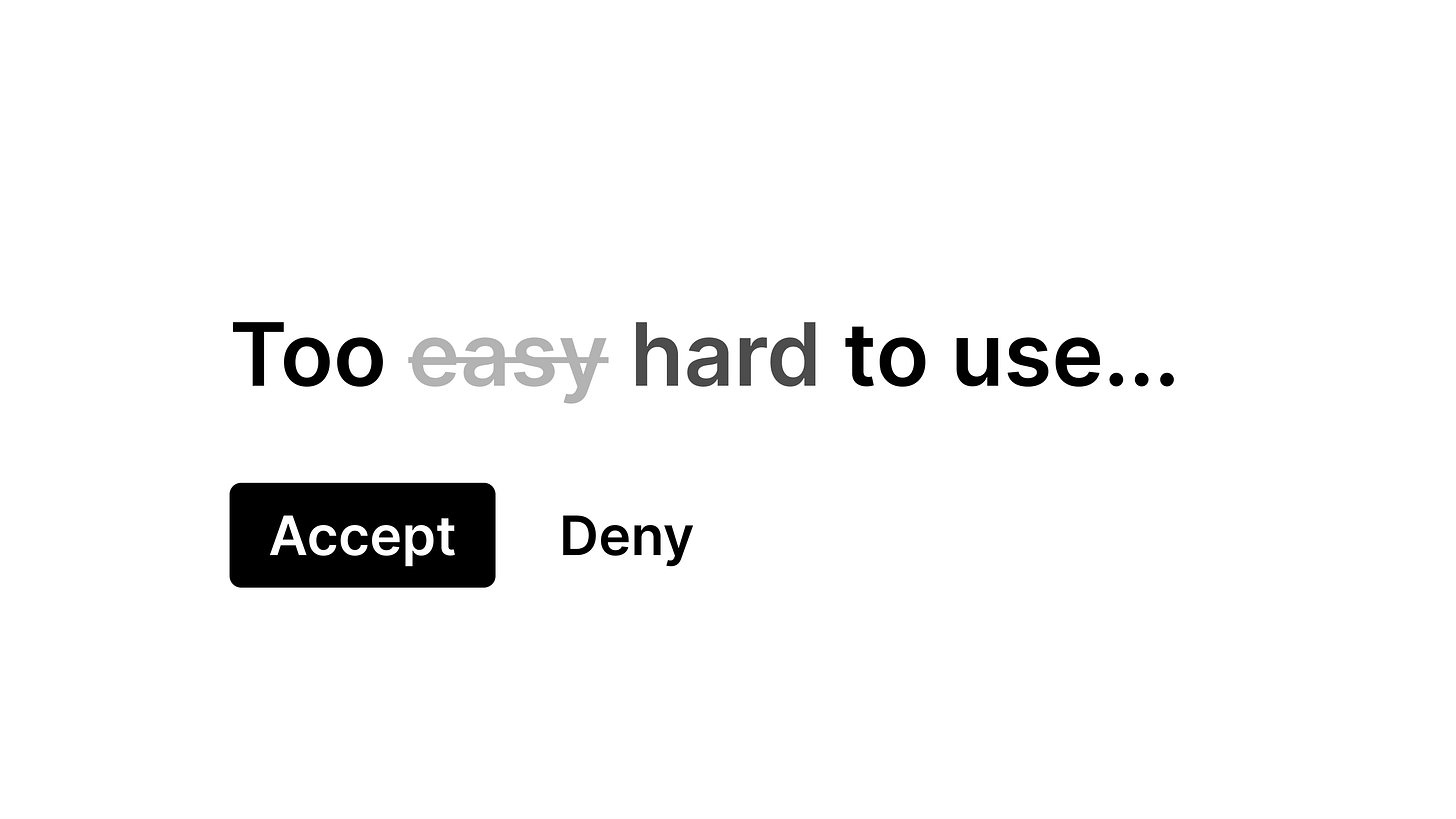Most products don’t fail because they lack features—they fail because they ask too much to their user. Every extra click, unclear message, or unnecessary decision burns mental energy, and when the cost gets too high, people give up.
We consume too much calories online
People burn more mental energy than they realize—on interfaces, and cluttered messages.
Complex problems drain users mentally. The same applies to interfaces.
Sweller’s theory explains that human cognitive resources are limited, and excessive cognitive load impairs learning and decision-making.
If an interface is too mentally taxing, people will disengage. This applies to marketing, product design, and branding—simpler experiences win because they require less processing effort.
The hidden cost of complexity
Companies often assume users have unlimited mental energy. They don’t.
Our bias: The longer you work on a product, the more complexity you can handle and the more you assume your users can handle.
Every extra feature, new concept, or unclear message adds cognitive load.
Audit your product: How many concepts does a user need to learn? How many clicks do your top 10 workflows require? How long does it take to read every text in your UI? You need to become obsessed about simplifying.
Design with calories in mind
Great products minimize effort: fewer choices, explicit actions, less friction.
Simple beats clever.
Familiar beats novel.
Predefined beats start from scratch.
Think about calories consumption in interface, error states, marketing—everywhere.
When did you last gain a new perspective on your feature? Cherish fresh eyes, first impressions, first feelings, and first experiences with your product.
3 strategies you can apply (Fogg’s Behavior Model)
Increase Ability (make it easier)
Refactor the steps required to complete key actions.
Leverage progressive disclosure to simplify key screens.
Use familiar patterns and intuitive interfaces to lower the learning curve.
Offer prefilled options to remove friction.
Simplify and shorten your UX copy.
Offer tooltips to reduce unknowns.
Increase Motivation (make it more rewarding)
Clarify pain points to solve.
Highlight benefits clearly—why should users engage?
Tailor experiences so users feel more connected to the product.
Use social proof, progress tracking, or gamification to encourage action.
Leverage the right trigger (show it at the right time)
Use timely nudges, notifications, or contextual hints to guide users when they are most receptive.
Ensure triggers are relevant and not intrusive. Bad timing and wrong interactions create friction instead of engagement.
Design triggers that align with user intent. Reinforce positive behaviors instead of adding distractions.
Learn more about the underlying social psychology here.
The power of less
Strong products don’t make people think.
The best marketing is effortless to absorb.
The best tools feel obvious to use.
Log every friction point. Be relentless about simplifying and refactoring.
The takeaway
Complexity isn’t a feature. It’s a tax.
Good design saves users from unnecessary effort. Great products don’t just look simple—they feel effortless.
This part of the newsletter is a place for you to access
the most valuable links I’ve found this month.
Resource of the month
Its basically Netflix, But for Design & Entrepreneurship. Handpicked podcasts, videos, blogs, and much more.
Thank you for reading
This newsletter is my attempt to deliver exclusive frameworks and actionable insights for entrepreneurs to harness design as their strategic advantage.
Remember, this is your journey as much as it is mine. If you feel this isn't what you're looking for at any point, please feel free to opt out–there will be no hard feelings.
If you have any suggestions on how I can improve the format, reply to this email with your feedback, and I will personally reply to all emails.
Micka 🤙






Super insightful as always Micka 🔥